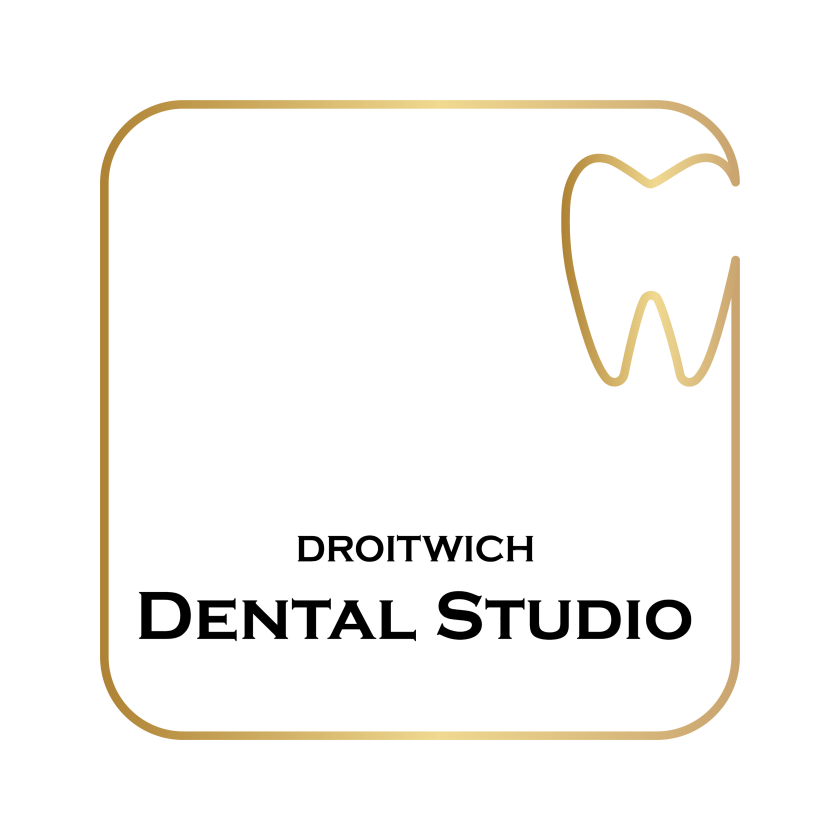Ever wondered why some people have picture-perfect smiles while others struggle with dental issues? Well, it all starts with the early foundations of oral health. Early orthodontic evaluations allow for timely intervention, guiding proper growth and development of the teeth and jaws.
In this blog, we will explore the importance of early orthodontic assessment and its impact on long-term dental health.

What Is Early Orthodontic Assessment?
Early orthodontic assessment is the process of evaluating a child’s dental development at an early age to identify any potential issues that may require orthodontic treatment in the future. It helps detect problems such as misaligned teeth, overcrowding, or jaw irregularities before they worsen.

Understanding the Importance of Early Orthodontic Evaluation
Early orthodontic evaluation plays a crucial role in maintaining optimal dental health in the long run. By assessing a child’s teeth and jaw at an early age, dentists can identify any potential issues that may arise later on. This proactive approach allows for timely intervention and prevents future dental problems.
Timely orthodontic evaluations have been shown to significantly reduce the risk of developing serious dental issues later in life. By identifying misalignment, crowding, or bite problems early on, orthodontists can implement appropriate treatment plans to correct these issues. This not only improves the appearance of the smile but also ensures proper functioning of the teeth and jaw.
Early intervention is key. By identifying and treating problems during childhood or adolescence, orthodontists can guide proper tooth eruption and jaw development. This prevents more severe complications that may require extensive treatments later in life, such as tooth extraction or jaw surgery.
Orthodontic evaluations provide an opportunity to assess a child’s oral health comprehensively. Dentists can evaluate factors like tooth alignment, jaw growth, and bite patterns to determine if any corrective measures are necessary. With early intervention, children can achieve healthier smiles and avoid potential difficulties associated with untreated dental conditions.
Identifying the Ideal Age for Initial Orthodontic Assessment
It is generally recommended that children have their first orthodontic evaluation by age 7. At this young age, most children have a mix of baby teeth and permanent teeth, allowing orthodontists to identify any potential problems with tooth alignment or jaw development.
Best Time to Schedule an Initial Orthodontic Evaluation for Children
Scheduling an initial orthodontic evaluation at the right time can make a significant difference in a child’s oral health. The best time to schedule this evaluation is between the ages of 7 and 9 when children are still growing rapidly and their bones are more flexible. By assessing their oral health at this early stage, orthodontists can detect any potential issues and create a treatment plan tailored to each child’s specific needs.


Recognising Signs for Timely Orthodontic Intervention
Early detection plays a crucial role in preventing future dental issues. By recognising common signs that indicate the need for early orthodontic intervention, parents can ensure timely treatment for their children. Some of these signs include:
- Bite issues: If a child has an open bite, crossbite, or overbite, it may be an indicator of misalignment that requires orthodontic intervention.
- Speech patterns: Speech impediments such as lisping or difficulty pronouncing certain sounds can be related to dental alignment problems.
- Thumb sucking: Prolonged thumb sucking can lead to changes in the alignment of teeth and jaw development.
Crowded or spaced teeth: Teeth that are crowded or have excessive gaps may require orthodontic treatment to achieve proper alignment.
Understanding how certain oral conditions can be indicators for timely orthodontic treatment.
Certain oral conditions can serve as red flags for the need for early orthodontic treatment. For example:
- Delayed tooth eruption: If a child’s teeth are not erupting within the expected timeframe, it could indicate underlying issues that require orthodontic assessment.
- Early loss of baby teeth: Premature loss of baby teeth due to decay or trauma can disrupt the natural development of permanent teeth and necessitate orthodontic intervention.
- Jaw abnormalities: An uneven jawline or asymmetrical facial structure may signify skeletal discrepancies that should be addressed through orthodontics.
Recognising the importance of addressing dental issues promptly to prevent further complications.
Timely intervention is essential in preventing further complications associated with dental issues. By addressing these problems promptly, parents can help their children avoid:
- Difficulties with chewing and biting properly can impact nutrition and overall health.
- Increased risk of tooth decay and gum disease due to inadequate oral hygiene caused by misaligned teeth.
- Self-esteem issues and psychological impact resulting from dental appearance concerns.
Benefits Of Early Orthodontic Treatments For Children
✅Advantages of Early Orthodontic Treatments
Early orthodontic treatments in young children offer several benefits for their dental development. By addressing dental issues early on, potential problems can be identified and treated promptly, preventing them from worsening over time. These interventions can help correct misaligned teeth and jaw growth issues, ensuring proper alignment and function.
✅Correcting Misaligned Teeth and Jaw Growth Issues
One of the key advantages of early orthodontic treatments is their ability to correct misaligned teeth and jaw growth issues in children. Through techniques such as braces or aligners, dentists can guide the growth of permanent teeth into their correct positions. This not only enhances the appearance of the smile but also improves bite function and overall oral health.

✅Positive Impact on Self-esteem and Confidence
Early orthodontic treatments can have a positive impact on children’s self-esteem and confidence. Misaligned teeth or jaw issues may affect a child’s appearance, leading to self-consciousness or embarrassment. By addressing these concerns early on, children can experience improved aesthetics, which can boost their confidence levels and positively impact their social interactions.

Cost Savings and Long-term Advantages of Early Orthodontic Intervention
Cost-saving benefits of early orthodontic intervention
Early orthodontic assessment and treatment can lead to significant cost savings compared to delayed treatments. By addressing dental issues at an early stage, before they worsen or become more complex, patients can potentially avoid the need for more extensive and expensive procedures later on. For example, correcting misaligned teeth or bite problems in childhood may prevent the need for braces or other orthodontic appliances in adulthood.
Long-term advantages of addressing dental issues early on
Addressing dental issues early on has several long-term advantages. Firstly, it can help prevent further complications that may arise from untreated problems. For instance, if a child has overcrowded teeth, early intervention can create enough space for permanent teeth to erupt properly, reducing the risk of tooth decay and gum disease in the future.
Secondly, early orthodontic intervention can contribute to better overall oral health. By aligning teeth and correcting bite issues, it becomes easier to maintain good oral hygiene practices such as brushing and flossing effectively. This reduces the risk of cavities, gum disease, and other oral health problems down the line.
Potential reduction in the need for extensive dental work
One of the key benefits of early orthodontic intervention is its potential to reduce the need for extensive dental work later in life. By identifying and treating problems earlier, such as malocclusion or jaw misalignment, it becomes possible to guide proper facial growth and development. This proactive approach can help minimise the need for invasive procedures like jaw surgery or extractions in adulthood.
Overall, early orthodontic assessment offers not only cost savings but also long-term advantages by preventing future dental issues through timely intervention. By addressing problems at their earliest stages, individuals can enjoy improved oral health outcomes while potentially avoiding more complex and costly treatments later on.
Conclusion: Embracing Early Assessment for Future Dental Health
Early orthodontic assessment plays a crucial role in preventing future dental issues. By identifying potential problems at an early stage, children can receive timely intervention and treatment, leading to improved oral health outcomes. The ideal age for initial assessment should not be overlooked, as it allows orthodontists to detect any signs of misalignment or abnormalities before they worsen.
Early orthodontic treatments offer numerous benefits for children. Not only do they address aesthetic concerns, but they also promote proper jaw development and alignment, preventing potential complications in the future. Moreover, well-timed orthodontic interventions have been shown to positively impact overall health, as they can improve speech, chewing ability, and self-esteem.
By seeking professional evaluation at the appropriate age and promptly addressing any identified issues, individuals can enjoy long-term advantages such as reduced treatment costs and improved oral health outcomes. Embracing early assessment is a proactive approach that sets the foundation for a lifetime of healthy smiles. Contact Droitwich Dental Studio today to book an appointment for your child.

Frequently Asked Questions
The ideal age for a child’s first orthodontic assessment is around 7 years old. By this age, most children have a mix of baby and permanent teeth, allowing orthodontists to identify any emerging problems and plan appropriate interventions if necessary.
Signs that may indicate the need for timely orthodontic intervention include crowded or crooked teeth, difficulty biting or chewing, mouth breathing, thumb sucking beyond the age of 5, speech difficulties, or jaws that shift or make sounds. If you notice any of these signs, consult an orthodontist for an evaluation.


